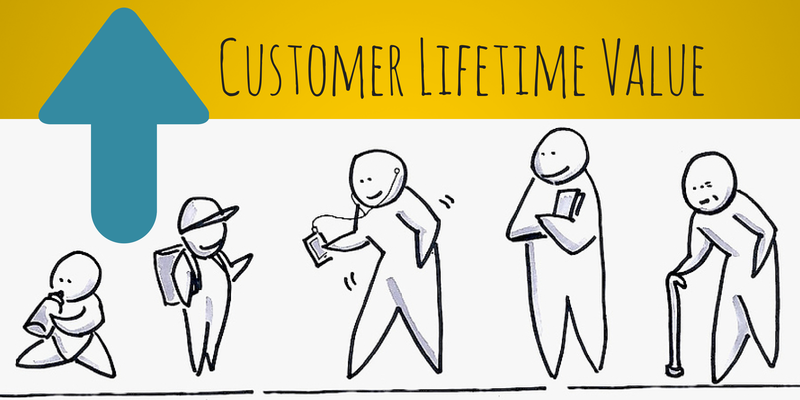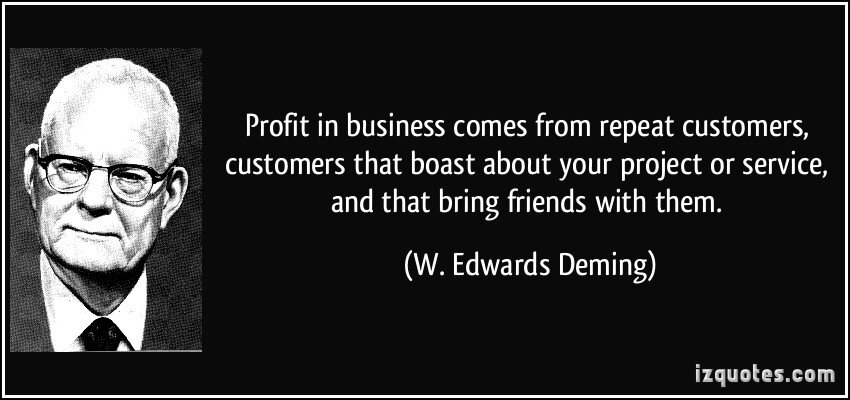- 17 August 2021
- Customer Lifetime Value
- Reading time:7 min
The Importance of Customer Lifetime Value (CLV)
Aiming to get a customer to purchase a product has been the overall crux of commerce marketing strategies – they are designed to gain and retain customer attention and demand, in hope to convert first time buyers into long-term loyal customers.
Aiming to get a customer to purchase a product has been the overall crux of commerce marketing strategies – they are designed to gain and retain customer attention and demand, in hope to convert first time buyers into long-term loyal customers.
However customer acquisition is proving to be more and more difficult as acquisition costs via Google and social media increases and the new generation develop preferential taste to companies who rely heavily on mobile devices. A more cost effective and efficient method of reeling in successful repeat customers is obtaining and correctly interpreting Customer Lifetime Value (CLV) data.

The Customer Lifetime Value is a crucial factor in determining the best approach for your marketing strategy for your company. In essence, it is an educated prediction of the net profit attributed to the entire future relationship with a customer. When studied carefully, it reveals customer behaviour from their first purchase and how they fluctuate over time with any consecutive purchases. This data contains invaluable patterns that will heavily assist with important decisions your company has to make, especially when it comes to marketing strategies.
CLV is determined by the following factors:
How much a customer spends in a given order
How many orders a customer makes
Evidently, the higher your CLV is, the better outcome for your company since it increases competitive value through:
Outbidding competitive ad spend
The ability to provide service customers at a premium level
Affording to invest more or upgrade products and services
Companies that correctly interpret the information in the study will have a competitive advantage over the brands who continue to prioritise conversation rates over customer relationships.
UNDERSTANDING THE STATISTICS
Most of the time, customers who purchase for the first time are only fulfilling an impending need rather than being interesting in a continuous consumer-customer relationship. According to data from RJMetrics, new customers spend on average $154 in the first year with 69% of this spent in the first month – 32% of this number is likely to make a secondary purchase. This initial number helps determine those who are more likely to be a recurring customer, thus revealing to companies who they should be targeting to secure loyal buyers.
The Loyal Buyers
The top 10% of company clients are worth 6x more than the $154 average, with the 1% worth 18x more – this figure displays that a single customer in the top percentile will bring more billings than the lower 50% combined. Ideally, your company should spend more time identifying and recreating the marketing campaigns that attract this demographic as they have more worth than hundreds of lower value customers.

USING THE STATISTICS
By properly predicting the lifetime value of a customer, it gives you an instrumental insight in their future behaviour and buying patterns, allowing you optimise your strategies to cater for whatever statistics may present. This is done through looking at these three key facts:
The majority of customer’s 365-day (1 year) CLV) is reduced within the first 30 days as a customer
The most intense buying behaviour is within these 30 days.
Customers that outspend their peers at 30 days have a likelihood to continue doing so and fall into the loyal customer category.
A good retailer who exposes him or herself to thoroughly research techniques and a strong understanding of their data won’t need to wait the full year to know which marketing campaigns, products or promotions are bringing in the best customers. Instead, they look at the first 30 days of a customer’s buying behaviour and cross referencing the numbers with pre existing regular buyers. In addition, the following can also be studied to further the accuracy of these predictions:
Product category
– the way your products are managed and organised can have a major influence on the likelihood of your customers finding themselves at the checkout page.
Acquisition
– Customer Acquisition Costs (ACA) is the cost associated in convincing a customer to buy a product or service and a vital business metric. By calculating this correctly, it aids your company decide how much of your resources can be profitably spent – basically it helps you determine how much dollar signs your customer is worth.
Number of items ordered
– A customer who purchases multiple items have a greater chance of being a recurring customer verses a patron buying the one off item; most likely they were simply fulfilling a need than being interested in becoming a regular.
Days between orders
– Much like the point above, a regular pattern of purchase behaviour sends very strong signals of them developing into a loyal customer.
IMPROVING YOUR STATISTICS
Two ways of improving your company’s rank is by focusing on the following:
Acquiring high value customers
Increasing the value of your customers
As stated earlier, most of the customer’s buying behaviour is found within the first 30 days. Only 32% of customers actually order a second time over the course of the first year, with this likelihood increasing exponentially with each additional purchase.
If this information were to be utilised in a smart manner, retailers would then have an invaluable playbook on how to turn first-time buyers into recurring loyalty members, increasing their overall CLV and thus increasing your company billings. Looking closely at campaigns that encourage their consumer activity (e.g. discounts, loyalty rewards etc) are a sure fire way of achieving CLV success.
However the right campaigns being targeted at the right customer is not the only way to keep a constant flow of loyalty members. Your customer retention starts right at the first point of contact, which is your website. By strategically designing your online retail environment to give a premium user experience, this positive impression could affect the likelihood of them making a transaction. Price setting thresholds and attracting shipping deals are also enticing to customers and may encourage recurring purchases.
For more information on how to improve your online retail presence and increase your overall CLV, talk to us today - we specialise in magento ecommerce solutions.
Acidgreen is an award winning digital marketing agency and is one of the first Magento Partners in Australia. With a team of certified Magento developers, we ensure our clients that we provide them with a fully optimized magento website that is both efficient and durable for all your online commerce needs.
